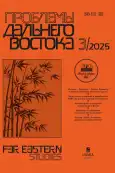The article examines the activities of rural financial institutions in China, which act as an important link in financing 'samong' (the Three Rural Issues, village, peasants, and agriculture) projects. Relying on the Chinese experts' papers, the author describes the structure and main characteristics of rural financial institutions, which include rural commercial banks, rural cooperative banks, rural credit cooperatives, village and township banks, microcredit companies, etc. The study analyzes the development of the reform of rural financial institutions during the 14th Five-Year Plan designed to facilitate solving problems that they encounter, including insufficient capital, focusing on short-term goals, high levels of risks, and overall poor performance. The reforms imply reducing the number of rural financial institutions through mergers and acquisitions, changing their strategy to focus on developing banking services that correlate with local characteristics and the evolution of clients' necessities, exploring regional potential and projects for lending in more detail, and expanding the use of digital services. In connection with the government's policy of continuing the poverty alleviation plan, the growing priority of rural regeneration, and the predominance of funding of science and technology, rural financial institutions have new tasks to fulfill. In order to carry out adequately, they need to study the latest trends both in the local industry and agrarian complex on a continuous basis, identify the objects with the greatest potential, and develop products and services tailored to their needs.
 7–23
7–23


 24–36
24–36


 37–51
37–51


 52–66
52–66


 67-81
67-81


 82–93
82–93


 94–111
94–111


 112–129
112–129


 130–140
130–140


 141–160
141–160


 161–170
161–170


 171–175
171–175


 176-177
176-177


 178-179
178-179


 180-181
180-181












